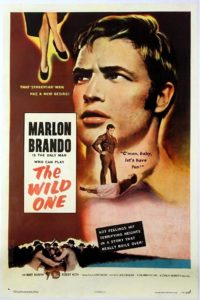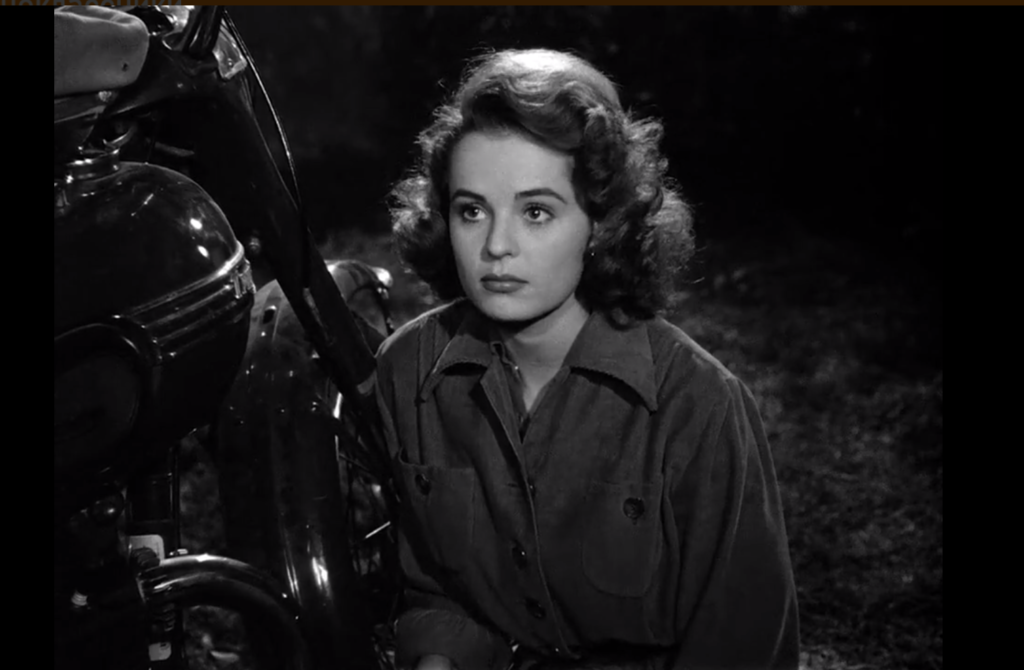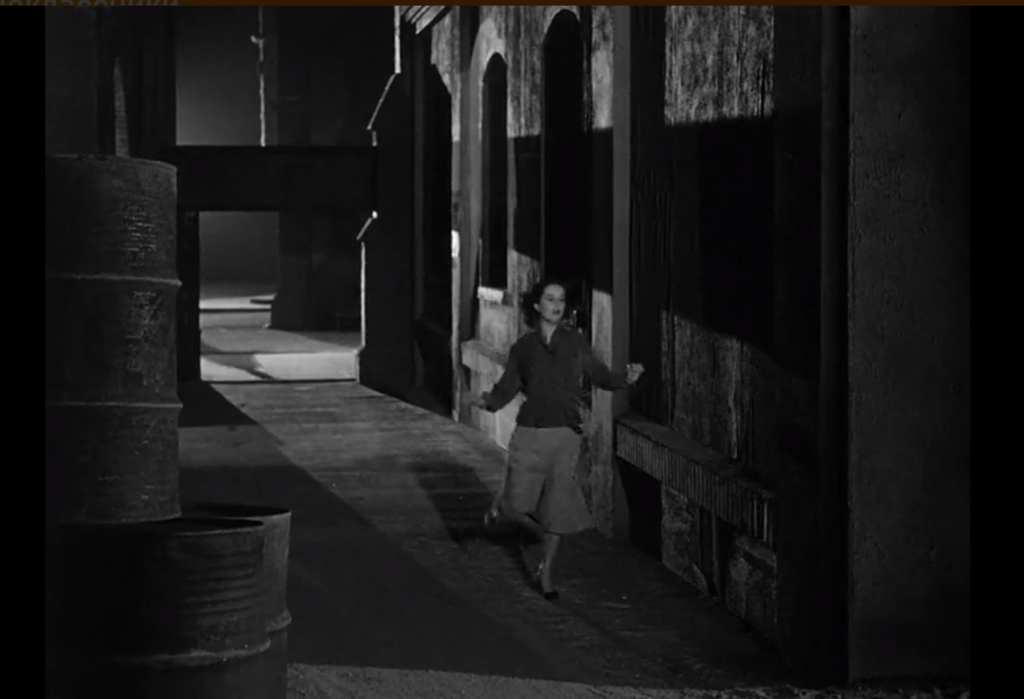“What are they tryin’ to prove, anyway?”
|

Synopsis:
When a motorcycle gang led by a rebel named Johnny (Marlon Brando) wreaks havoc on a small town by disrespecting citizens and engaging in a fight with a drunk rival (Lee Marvin), the meek local police chief (Robert Keith) is quickly overwhelmed. Meanwhile, Brando falls for Keith’s beautiful but “square” daughter (Mary Murphy).
|
|
Genres:
- Counterculture
- Gangs
- Lee Marvin Films
- Marlon Brando Films
- Motorcyclists
- Small Town America
Response to Peary’s Review:
Peary writes that this “first and best of a terrible genre” — the “motorcycle film” — was “based on true events: in 1947, 4,000 members of a motorcycle club gathered for a three-day convention in Hollister, California, and terrorized the town.” He notes that this is the movie that “firmly established Marlon Brando’s alienated antihero/rebel screen image”: here he “plays the moody, mumbling, leather-jacketed leader of the ‘Black Rebels'”, and is clearly a “tough guy” but “smarter and, beneath his detached attitude, more decent than the other punks.” Peary argues that while the “film isn’t particularly impressive”, it “has a few exciting scenes” and was likely appealing to young audience members given that “the townspeople who try to drive away the cyclists come across as being just as bad as the cyclists.” Pretty Murphy is a refreshingly independent romantic protagonist, and Brando certainly fits the bill as an intriguing bad boy — but the storyline offers little other than mayhem and havoc; it’s hard to blame the town for wanting their peace, quiet, and safety back.
Redeeming Qualities and Moments:
- Marlon Brando as Johnny

- Mary Murphy as Kathie

- Atmospheric cinematography

Must See?
No, though it’s worth a look for its historical relevance.
Links:
|
One thought on “Wild One, The (1953)”
Not must-see.
It’s somewhat hard to know how to evaluate a film like this, actually. It was rather controversial when released (see Wikipedia for details) but, seeing it now, it becomes difficult to know the exact cause of the controversy (based on the film) – other than what was actually *behind* the film (the threat of gang violence).
What we see on-screen appears dated in its sensibility – if it was that authentic to begin with; I can’t help feeling that, to a significant degree, this is a Hollywood version of what the film is trying to depict. A lot of the behavior of the gang comes off as goofy and only somewhat disruptive as opposed to actually threatening.
Still… the film was seen as ‘explosive’ enough to get it banned in the UK for 14 years. Perhaps its implied impact was enough to cause alarm about what could give certain audiences ‘ideas’.
Nevertheless, this film loses a lot of impact since it seems to not be dealing truthfully-enough with its subject. The first half, in particular, is even oddly dull.
The best writing comes with Jay C. Flippen’s decisive warning to Brando near the end of the film.
I’m only a bit familiar with director László Benedek’s work. It seems he made 14 films. One of those is his impressive film of ‘Death of a Salesman’; another is 1971’s ‘The Night Visitor’, with Max von Sydow (which Peary seems to have overlooked, though it’s certainly of interest to cult film fanatics).